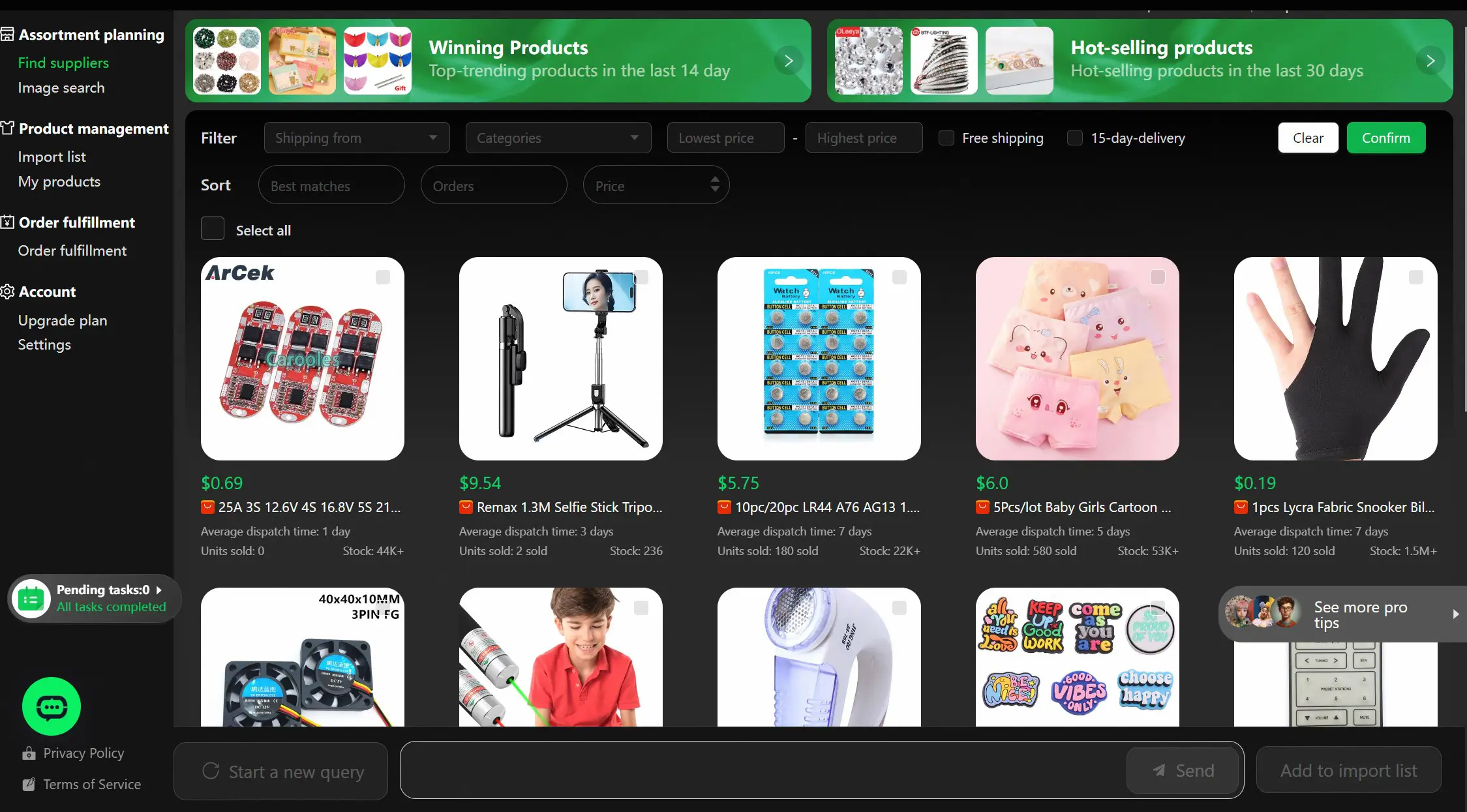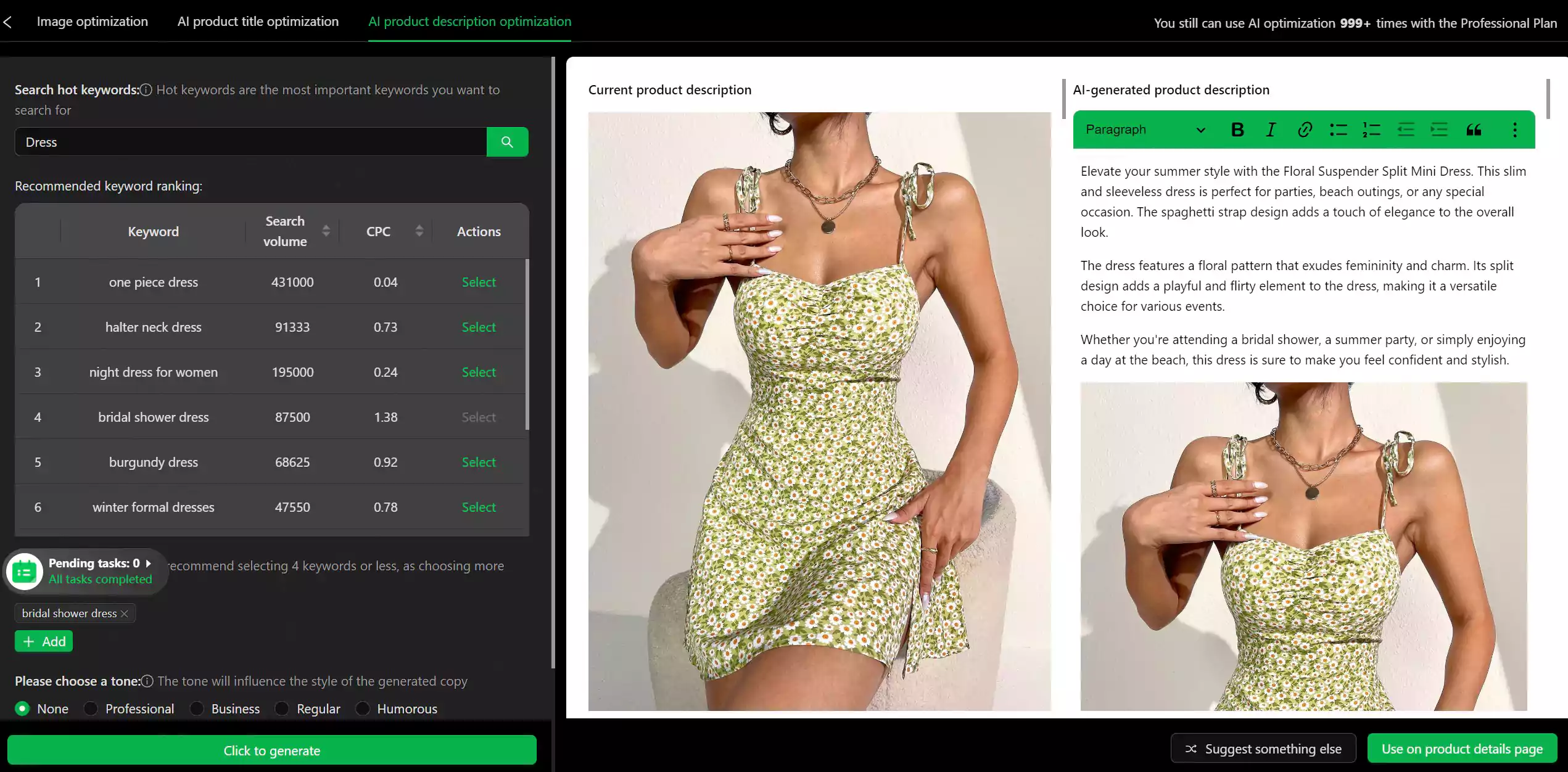Determining the right price for your dropshipping products is vital for the success of your e-commerce business. It necessitates a thoughtful and strategic approach to balance profitability with market competitiveness. This comprehensive guide will explore the essential factors to consider when pricing your dropshipping products and provide valuable tips for optimizing your pricing strategy to maximize revenue.
- Comprehending Costs:
To carve a pathway to healthy profit margins amidst the fluctuating landscapes of dropshipping, one must first master the art of comprehending costs. It entails a thoughtful consideration of elements, stretching from the tangibility of product costs and packaging materials to the requisites of shipping, marketing prowess, platform fees, and unseen overheads.
Your venture into this realm should commence with a discerning evaluation of individual product costs. The process encompasses everything from wholesale prices to the inevitable taxes and obligatory fees.
In the succession of things, account for those expenses intrinsically associated with packaging, which involve, among others, the humble boxes and labels. Concurrently, cast your eyes towards the costs germinating from shipping, a spectrum that spans across the terrains of both domestic and overseas transactions.
Further on, permit room for expenditures that extend from the vast canvas of marketing – the intricacies of social media advertising and the trend-setting realm of influencer partnerships are but a smidge of these.
- Immersion into Competitive Pricing:
Acquiring a thorough comprehension of your competitors’ pricing strategies plays a pivotal role in strategically positioning your products in the market. Engage in comprehensive research to delve into products that share similarities with your own, thus enabling you to procure valuable insights into the pricing terrain.
Give careful consideration to the factors that shape these pricing boundaries. Elevate the perceived quality of your products, cultivate a strong brand reputation, and explore opportunities to provide additional value-added services.

Equipped with this knowledge, thoughtfully contemplate your strategic direction. Should you opt to competitively undercut your rivals or aspire to establish yourself as an esteemed premium brand? Each path comes with its own set of responsibilities and rewards, thus warranting a diligent assessment of your options.
- Determine Your Profit Margin:
After understanding your costs and analyzing competitor pricing, it is time to determine your desired profit margin. Consider the value you provide to customers, the market demand for your products, and your business goals when setting your profit margin. Aim for a margin that allows you to remain competitive while generating a sustainable income for your business.
- Consider Pricing Strategies:
There are several pricing strategies you can consider for your dropshipping business:
- Cost-Plus Pricing: Add a fixed markup percentage to your product cost to ensure you cover all expenses and generate a profit.
- Competitive Pricing: Set your prices in line with or slightly lower than your competitors to attract price-sensitive customers.
- Value-Based Pricing: Price your products based on the unique value and benefits they offer customers, allowing you to command a premium price.
- Dynamic Pricing: Utilize technology and algorithms to adjust prices in real-time based on market demand, competition, and other variables.

- Unleashing the Power of Discounts and Promotions:
To orchestrate a dynamic allure that compels customers to embark on a shopping spree in your dropshipping store, deliberate incorporation of discounts and promotional propositions will prove instrumental. This tactic can metamorphose your platform into a veritable magnet, drawing in a fresh clientele, while concurrently nurturing repeat patronage.
These data facets will provide valuable insights to assess the effectiveness of each campaign, enabling informed deliberations on whether to continue, adjust, or discontinue specific offers. Constant vigilance over the reverberations of your markdowns on overarching revenue is pivotal, rendering requisite adjustments an ongoing process.
Deploying discounts and promotions strategically can stoke a fervor and urgency among potential acquirers, propelling a surge in sales and fostering customer loyalty. Experiment with promotional genres—percentage-driven savings, ‘buy-one-get-one’ schemes, or complimentary shipping on orders breaching a specified threshold. Peruse the reaction to these initiatives by scrutinizing key indicators like conversion rate, average order value, and holistic revenue. These data facets will provide valuable insights to evaluate the effectiveness of each campaign, enabling informed deliberations on whether to continue, adjust, or retire specific offers.
Profit margin vulnerabilities implored by discounts warrant cautious consideration. Calibrate to a degree that, while lucrative to customers, also safeguards your capacity to defray costs and achieve acceptable profit. Detailed tracking of the profitability allied with each campaign will highlight efficacious, sustainable discount strategies for your dropshipping enterprise.
Pricing is an intricate juggling act – judiciously employed discounts and promotions wield potent force, but they demand strategic deployment to safeguard robust financial health. Regular data analysis, promotion fine-tuning, and agility in response times will ensure that discounts contribute to sustainable business augmentation and prosperity.
- Test and Optimize:
Pricing is not a one-time decision. It’s via regular testing and optimizing your pricing strategy to find the sweet spot that maximizes your revenue. Analyze customer behavior, sales data, and conversion rates to identify opportunities for improvement. Experiment with different price points, bundled offerings, and upselling techniques to find what resonates best with your target audience.

- Monitor Market Trends:
Stay informed about changes in the market, industry trends, and customer preferences. Keep an eye on your competitors’ pricing strategies and adjust yours accordingly. Monitor fluctuations in supplier costs, foreign exchange rates, and shipping fees to ensure your pricing remains competitive and profitable.
- Customer Perception:
Remember that pricing is not purely a numbers game. Consider how your pricing strategy aligns with your target customers’ perception of value. Too low a price may raise concerns about product quality, while a premium price may create expectations of exclusivity and higher quality. Align your pricing with your brand positioning and target customers’ expectations.
Conclusion:
Pricing your dropshipping products is a balancing act between covering costs, staying competitive, and maximizing profitability. By understanding your costs, researching competitor pricing, determining your profit margin, and considering various pricing strategies, you can establish a solid pricing strategy for your dropshipping business. Regular testing, monitoring of market trends, and aligning with customer perception will help you optimize your pricing strategy over time, leading to increased revenue and business growth.